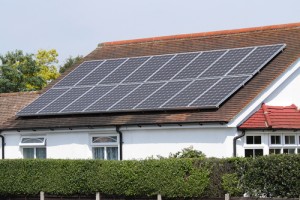Relief from painful consolidation in the solar industry is forecast to end in 2015 as supply and demand in the photovoltaic (PV) industry rebalances, dominance shifts from Europe to other markets such as China and Japan, and companies reposition themselves for a new paradigm, leading industry analysts said last week.
In 2012, there was almost 60 GW in worldwide PV capacity, but only 30GW in demand, leading many large companies such as Suntech to go bankrupt.
Consolidation in the solar industry is expected to continue for the next 18 months, but from the second half of 2014 demand could start to turn a corner, said Michael Barker, analyst at NPD SolarBuzz.
“Once the end market [demand] gets to a 45 GW level, new capacity will need to start coming online, especially if tier-one players want to maintain or grow their market share,” Barker told delegates at the Intersolar North America conference in San Francisco.
“Even though the overall capacity levels are projected to increase, demand levels are projected to increase at a faster pace, so the oversupply situation is easing over time,” Barker added.
Diversification of demand around the world began to shift from Europe, which accounted for almost 70% of the market in 2011, to Asian countries such as Japan and China, the bulk of which will be driven by the utility segment of the market. China has set a target to install 50 GW of solar by 2020, and Japan’s 2020 target is a little over half that, at 28 GW.
“Every other region is growing in market share while Europe is declining,” Barker said. “Demand in major Asia-Pacific countries will double by 2014, while Europe will have cut its demand share by more than half.”
But North America and emerging markets were also seeing stable growth, he added.
“The U.S. is growing at a very good pace—not overwhelmingly so, but the diverse nature of the U.S. market and policy creates a stable base for demand growth because it’s not being driven by one or two policies,” he said.
Edward Cahill, research associate at Lux Research, said that even well established companies were having to reposition themselves in the market to survive low prices and shifting market patterns.
“The industry is recovering from severe overcapacity,” he said. “Because of that, companies are looking at re-entering or rebranding themselves, often by seeking a new technology or business strategy.
“Decisions they make now are going to determine not only how successful their re-entry or rebranding is, but also how resilient they are in the long term,” Cahill added.
Over the past couple of years, prices for PV panels have plummeted, dragging gross margins from 30% in 2010 to near zero or negative territory for most PV manufacturers. But gross margins are forecast to recover by 2015 to 11%.
“Companies are going to be looking for new technologies and new strategies that can get those gross margins into that 20% level,” said Cahill.
“The next four years are the key time for the industry; there’s going to be some very significant changes with overcapacity falling below 20% by 2015. That’s a healthy level for the industry.”
 First Solar, the leading company in cadmium telluride thin film, was already ahead of the curve, he said. The company had recognized that even though it has a market-leading technology in CdTe, it is still susceptible to price pressure that crystalline silicon manufacturers are putting on them.
First Solar, the leading company in cadmium telluride thin film, was already ahead of the curve, he said. The company had recognized that even though it has a market-leading technology in CdTe, it is still susceptible to price pressure that crystalline silicon manufacturers are putting on them.
First Solar has moved downstream, where there are still profits, and has changed their technology to focus on desert conditions by improving encapsulants and edge sealants.
“They’ve already demonstrated 16.1% efficiency in a full-sized module and they’re planning to get to 17% by 2017,” Cahill said. “That’s a 4% absolute efficiency gain, but also a 30% relative gain, reducing that dollar-per-watt output by one-third. That’s a huge lever that crystalline silicon cannot do.”
In April of this year, First Solar acquired Tetrasun, a startup that had achieved 21% efficient crystalline silicon cells after 10 months of development.
“First Solar is rebranding from a utility-scale developer to a more holistic solar company and will have higher profit margins by 2015,” he said.
First Solar had targeted utility-scale installations in developing markets with its CdTe technology, but can now broaden its target markets with Tetrasun’s crystalline silicon technology, which is more widely used in the residential solar market.
“After the acquisition, they can now use crystalline silicon to target residential installations in developed markets like Europe, Japan and the U.S.,” said Cahill. “They can now re-enter those markets, essentially increasing their total addressable market to 40 GW.”